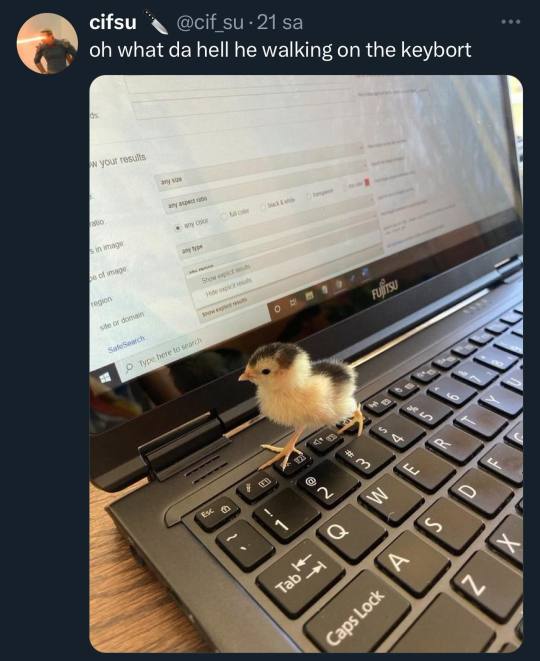Text
Warbler Showdown pt 2; Bracket 1, Poll 3
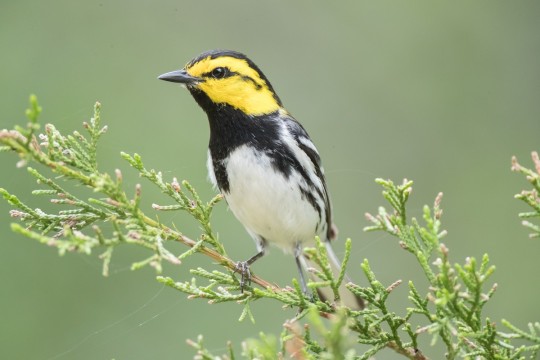
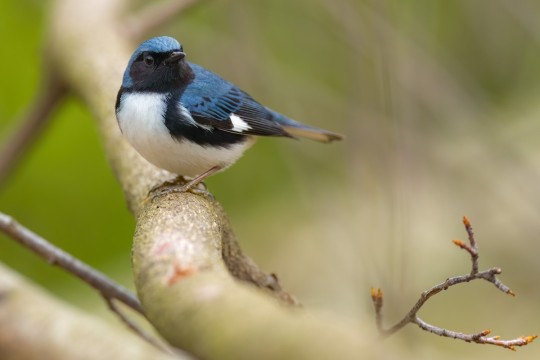
Golden-cheeked Warbler (Setophaga chrysoparia)
IUCN Rating: Endangered
Range: central Texas during the breeding season; overwinters in Central America- Guatemala, El Salvador, Honduras and northern Nicaragua.
Habitat: Old-growth and mature regrowth juniper-oak woodlands in limestone hills and canyons. Ashe juniper is a key tree species on the breeding grounds, as the bark is used in nest construction.
Subspecies: none
Black-throated Blue Warbler (Setophaga caerulescens)
IUCN Rating: Least Concern
Range: prefers the Appalachian mountains when in the eastern states, otherwise breeding in southeast Canada or New England. Overwinters in the Greater Antilles, as well as the Bahamas and along the Caribbean coast of the Yucatan, Belize, and Honduras.
Habitat: interior forests of undisturbed hardwood and mixed deciduous-coniferous trees.
Subspecies: 2
Image Sources: GCWA (Brendan Klick); BTBW (Matt Zuro)
#nww showdown#golden cheeked warbler#black throated blue warbler#setophaga#parulidae#passeriformes#ah... my two beloveds.... why must you fight...
1 note
·
View note
Text
Warbler Showdown pt2; Bracket 1, Poll 2
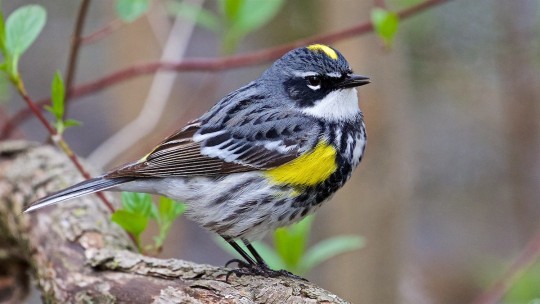
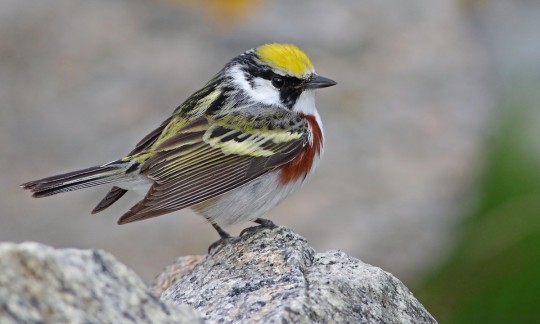
Myrtle Warbler (Setophaga coronata)
IUCN Rating: Least Concern
Range: Entirely North American; typically associated with the Eastern US, but does make it into the Western states during migration and for overwintering.
Habitat: mature coniferous and mixed coniferous-deciduous forests in the breeding season, preferring mountain forests when possible. When overwintering, they can be seen virtually anywhere small fruits like berries are present.
Subspecies: 2*; still a subspecies of Yellow-rumped Warbler under Clements, IOC recognizes MYWA as its own species, with two subspecies
Chestnut-sided Warbler (Setophaga pensylvanica)
IUCN Rating: Least Concern
Range: Eastern North America, preferring New England and the Eastern Providences in the breeding season; overwinters in Central America, concentrated heavily in Panama, Costa Rica and Nicaragua.
Habitat: breeding habitat is early successional deciduous habitats; likely confined to regrowth after natural disasters such as forest fires, high wind blowdowns, and/or catastrophic flooding before the 1800s. When overwintering, they seem to prefer mature or late second growth, but can be found in a wide variety of forest ages.
Subspecies: none
Image Sources: MYWA (Ed Harper); CSWA (Keenan Yakola)
#nww showdown#myrtle warbler#yellow rumped warbler#chestnut sided warbler#setophaga#parulidae#passeriformes
4 notes
·
View notes
Text
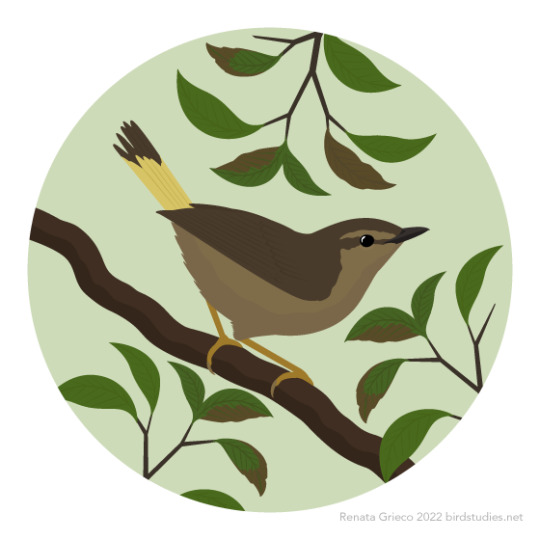
August 21, 2022 - Buff-rumped Warbler (Myiothlypis fulvicauda)
Found in parts of Bolivia, Brazil, Colombia, Costa Rica, Ecuador, Honduras, Nicaragua, Panama, and Peru, these warblers live in forests, usually near water. Foraging on or near the ground, they eat insects, spiders, and other invertebrates and sometimes follow army ant swarms. Pairs build domed nests with side entrances from plant fibers and other materials on sloped banks.
54 notes
·
View notes
Text
Warbler Showdown pt 2; Bracket 1, Poll 1
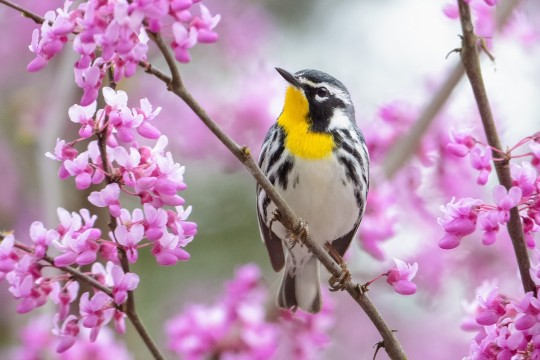

Yellow-throated Warbler (Setophaga dominica)
IUCN Rating: Least Concern
Range: The migratory population moves from the Bahamas and Greater Antilles to lowland Eastern and Midwest states; a more sedintary populations seem to live year-round in parts of Florida, Georgia, and Alabama.
Habitat: prefers wetter habitats, such as wooded steam bottomlands and cypress swamps, though they can be found in dry pine or mixed pine-deciduous forests. Also common in loblolly pine stands.
Subspecies: 3
Blackburnian Warbler (Setophaga fusca)
IUCN Rating: Least Concern
Range: breeds in the New England, Appalachia, and the Easter providences of Canada. Overwinters in the northern Andes, heavily concentrated in Peru, Ecuador and Columbia.
Habitat: coniferous or mixed forests, though during migration they can be found in any wooded area.
Subspecies: none
Image Sources: YTWA (Tyler Ficker); BLBW (Kyle Tansley)
#nww showdown#round 2#yellow throated warbler#blackburnian warbler#setophaga#parulidae#passeriformes
8 notes
·
View notes
Text
What's the Bird?
Location: Cape May County, New Jersey
Date: Winter

We ask that discussion under questions be limited to how you came to your conclusion, not what your conclusion was.
Happy Birding!
Keep the game alive! Submit a bird HERE
23 notes
·
View notes
Text
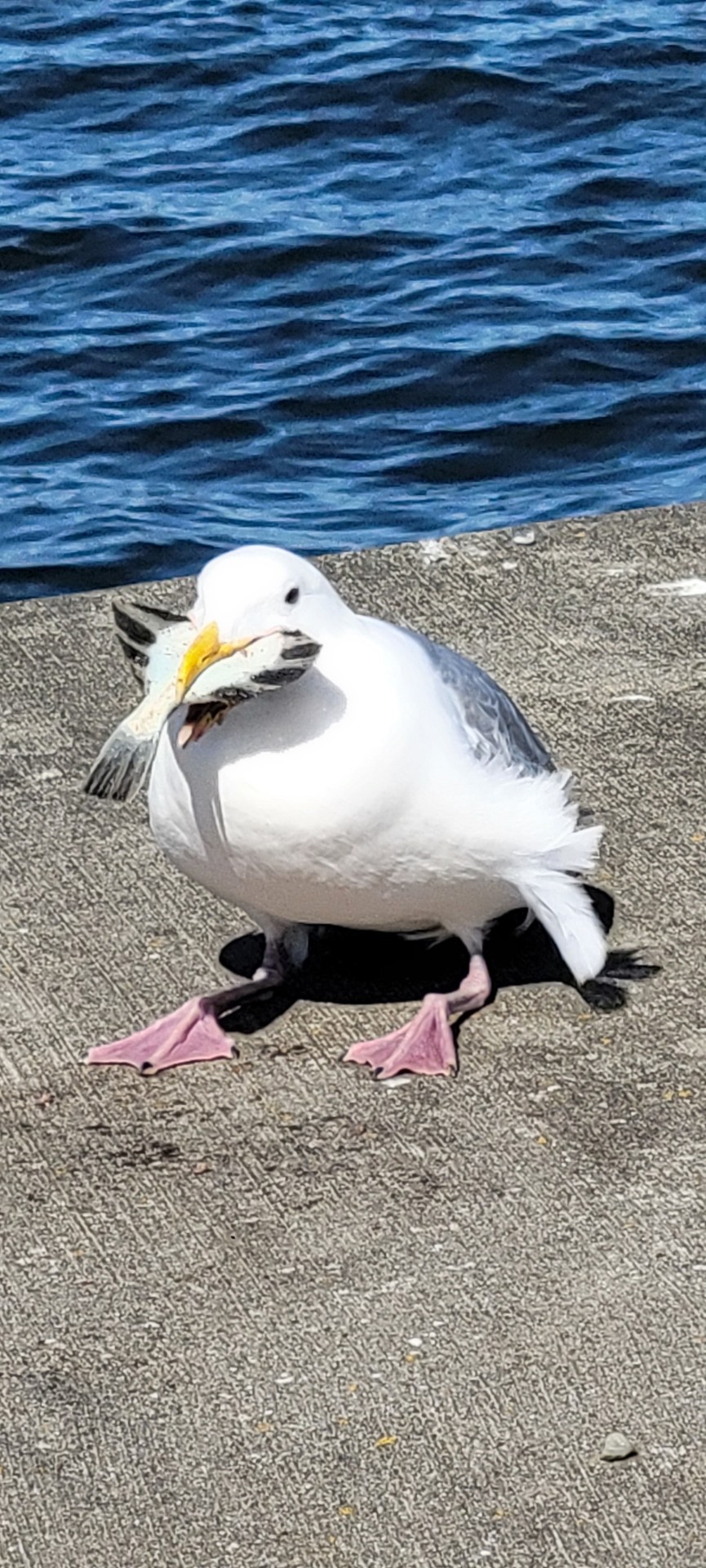
Saw this goofy guy just sitting with a too-wide fish in his maw.
He wasnt distressed at all, just chilling
todaysbird edit: my man is HORKING that thing down!! congrats sir
2K notes
·
View notes
Photo



three more #drawdinovember paintings; Talos sampsoni, baryonyx and stenonychosaurus
219 notes
·
View notes
Text

White-striped Warbler (José Carlos Motta-Junior)
13 notes
·
View notes
Photo

Prothonotary Warbler (Protonotaria citrea)
© Ryan Sanderson
102 notes
·
View notes
Text

[2870/11080] Curl-crested araçari - Pteroglossus beauharnaisii
Order: Piciformes
Suborder: Pici
Family: Ramphastidae (toucans)
Genus: Pteroglossus (araçaris)
Photo credit: Georges Kleinbaum via Macaulay Library
122 notes
·
View notes
Text

Wild turkey with bayberry, burdock, and ferns.
[ID: an illustration of a female turkey in a misty green field, facing to the left with one foot raised. The border is blue and gold with turkey feathers, eggs, and tracks. End.]
648 notes
·
View notes
Text

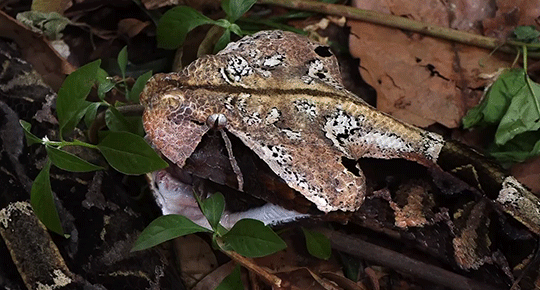

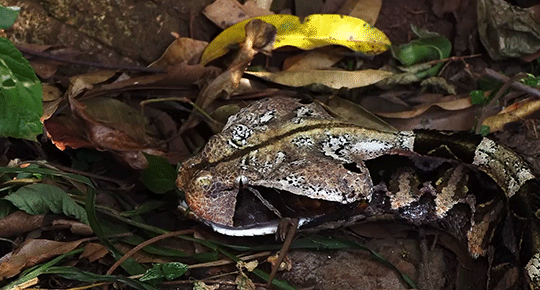

The longest fangs and highest venom yield of any venomous snake belong to the Gaboon viper. Unlike smaller, less strong species of viper they will bite their prey and hold on to it rather than letting it go and waiting for it to die.
©Living Zoology
#tw snake#tw animal death#MY BABYYYYYYYYYYY!!!!!!!#lil baby too fat#lil baby must walk and shimmy like caterpillar#LIL BABYYYYYYYYY#if venomous snakes were chill to own#OH the loving I would dote upon a Gabon Viper!!!!!
88 notes
·
View notes
Text
Genus: Setophaga
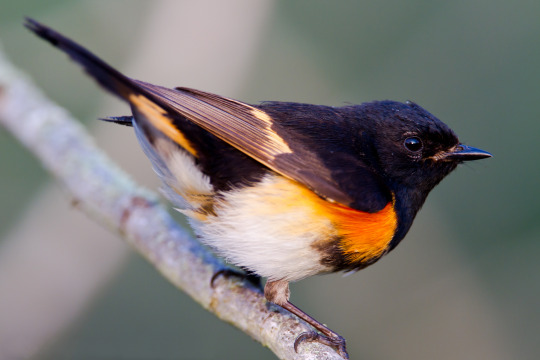
Originally, this genus was only used for the American Redstart (Setophaga ruticilla). Meaning 'moth-eater', it was used to refer to the flycatcher-like habits of the American Restart, which sallies forth from a perch to catch flying insects rather than plucking them from vegetation.
In 2010, however, a newly published paper disrupted what was thought of Parulidae taxonomy. Using a comprehensive molecular phylogenetic analysis of the family, several genus were merged into Setophaga. Not only that, but a separate genus of warbler was cleaved in two based on the findings.
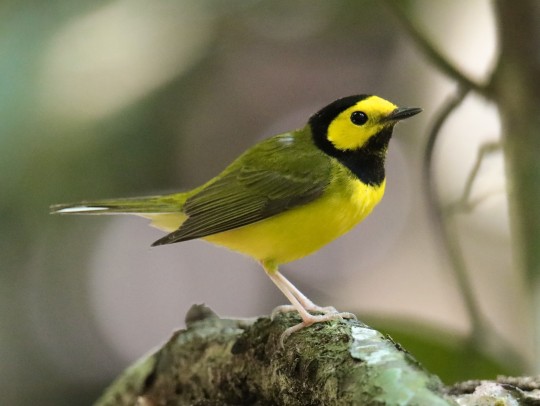
The Hooded Warbler was previously listed under the genus Wilsonia along with Wilson's Warbler and Canada Warbler. They had even been in an obsolete genus together before this (Sylvania), though this was changed to Wilsonia for other reasons. The 2010 study showed that Wilsonia was polyphyletic, meaning the group may share similar traits, but do not share a common ancestor. Hooded Warbler was moved to Setophaga and Wilson's and Canada Warbler were placed into Cardellina, an existing genus with Red-faced, Pink-headed, and Red Warbler.

The two Parula species were also folded into Setophaga as a result of the 2010 study. The Northern and Tropical Parula were originally the only two members of this genus, with the Northern Parula being the type-specimen of New World Warblers as a whole. I find that a bit ironic, as they are one of the smallest warblers and show quite an unusual color patter when compared to the rest of Parulidae, but I don't exactly know how type-specimen are chosen.

The largest genus to be merged with Setophaga was Dendroica. When I first began learning species names, I was familiar with this as the genus for most warblers. Due to the way taxonomic names work, the name which was published first takes precedent in these merging scenarios. So, despite the fact Dendroica had around 30 species and Setophaga had just 1, Setophaga was published first in 1827 (Dendroica in 1842).
In summary, Setophaga went from just a single species to now being the largest in the Parulid family, holding 34 species!
Image Sources: AMRE (Dan Pancamo); HOWA (Ninahale); NOPA (Dan Pancamo); MAWA (Cephas)
52 notes
·
View notes
Text

[730/10,977] Belding's Yellowthroat - Geothlypis beldingi
Order: Passeriformes
Suborder: Passeri
Superfamily: Emberizoidea
Family: Parulidae (new world warblers)
Genus: Geothlypis (yellowthroats)
Photo credit: Jim Hully via Macaulay Library
44 notes
·
View notes
Text

Louisiana Waterthrush - Southern Ohio by Matthew Studebaker
11 notes
·
View notes
